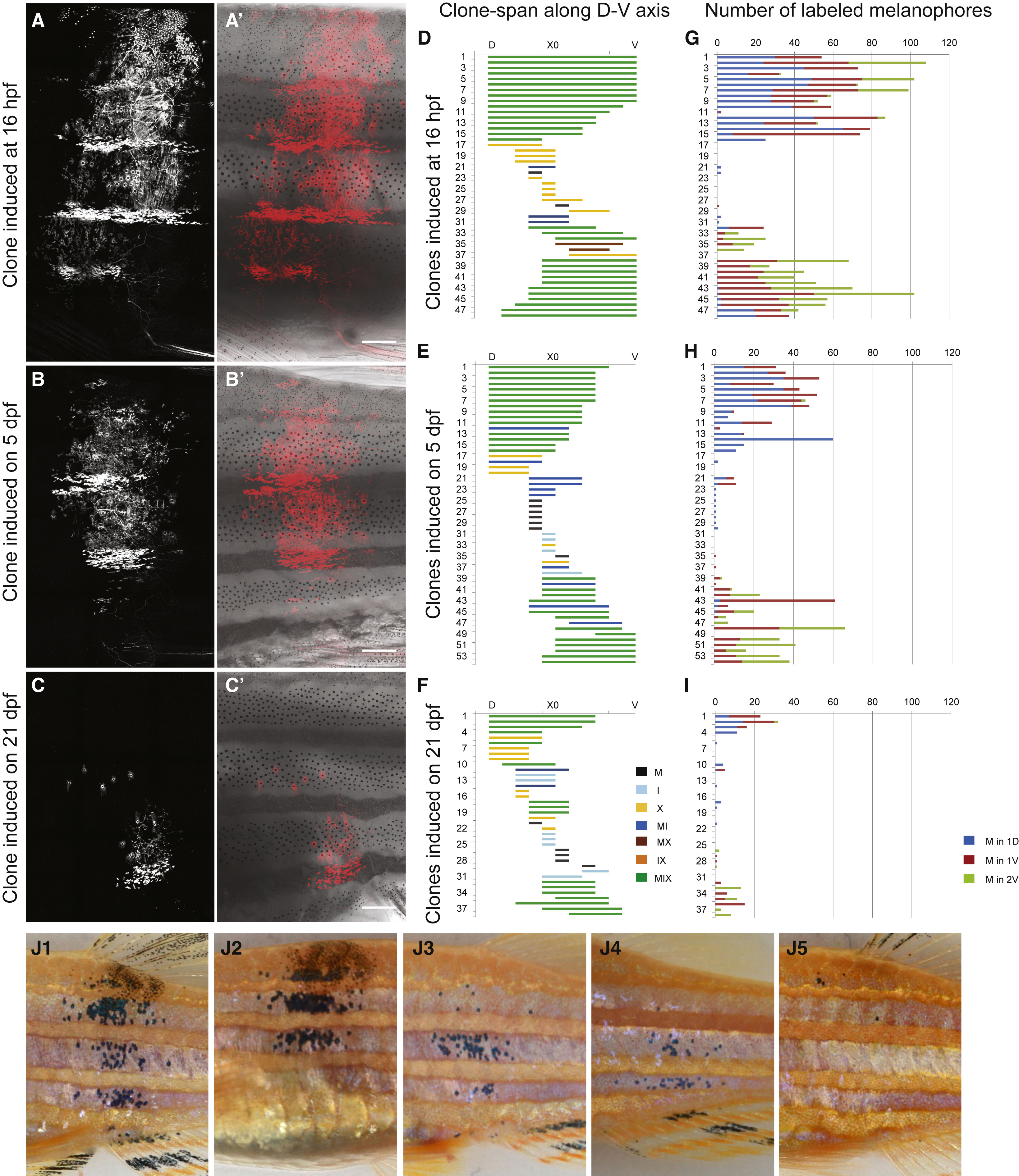Fig. 5
Neural Crest-Derived Progenitors are Multipotent but Do Not Have Stereotypic Outcome
(A-F) Clones in young adult animals obtained from Cre activation at (A, A′, D, G) 16 hpf, (B, B′, E, H) 5 dpf, and (C, C′, F, I) 21 dpf (genotype Tg(sox10:ERT2-Cre)/+; Tg(βactin2:loxP-STOP-loxP-DsRed-express)/+) reveal a progressive reduction in the size and span of the clonally derived pigment cells, albeit several clones remain MIX, suggesting existence of multipotent progenitors at all time points. (D-F) Quantification of the extent of the clones along the dorsoventral body axis; each line represents dorsoventral span of a single clone. Color code shows clone type according to pigment cell composition.
(G-I) Quantification of the number of labeled melanophores in each clone; each line represents the number of melanophores in an individual clone. Color code indicates the dark stripe: blue, 1D; brown, 1V; green, 2V.
(J1-J5) Skin of F0 adults from embryos injected with albino knockout CRISPR.
Scale bars in (A)-(C′) represent 500 µm. See also Figure S4.
Reprinted from Developmental Cell, 38(3), Singh, A.P., Dinwiddie, A., Mahalwar, P., Schach, U., Linker, C., Irion, U., Nüsslein-Volhard, C., Pigment Cell Progenitors in Zebrafish Remain Multipotent through Metamorphosis, 316-30, Copyright (2016) with permission from Elsevier. Full text @ Dev. Cell

